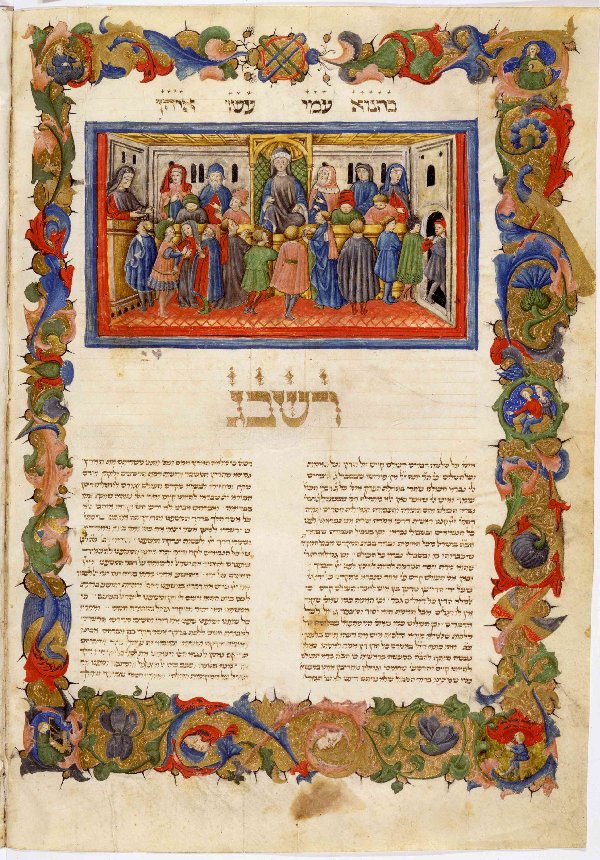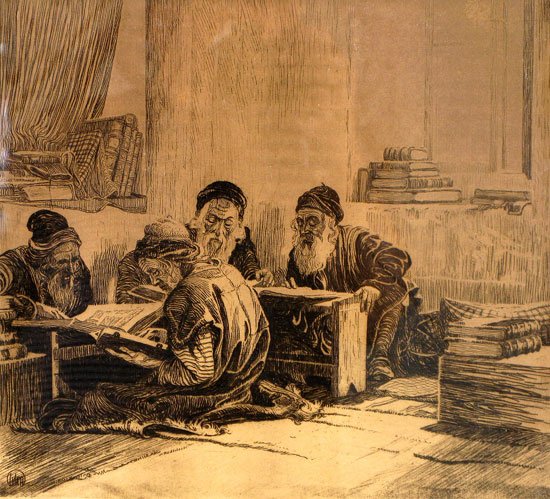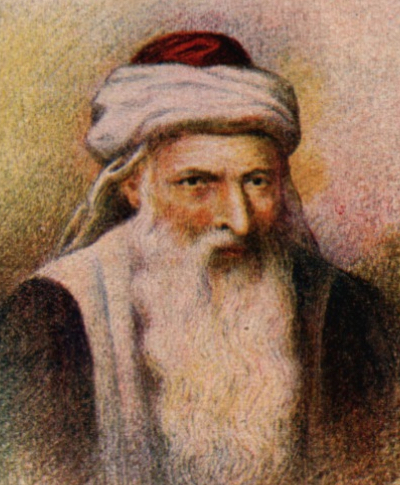|
Chaim Ben Yisrael Benvenisti
Chaim Benveniste (1603–1673) was a prominent rabbinic authority in 17th century Turkey. He was a student of Rabbi Joseph Trani and a brother of Joshua Benveniste. Born in Constantinople, he was appointed Rabbi of Tita (a town near İzmir) in 1644. In 1658, he was appointed one of the rabbis of İzmir. He initially followed Shabtai Tzvi, but later repented. Writings He authored several scholarly works, most notably the widely cited ''Shiyurei Kenesset HaGedolah'' and ''Kenesset HaGedolah'', halakhic ''Halakha'' (; he, הֲלָכָה, ), also transliterated as ''halacha'', ''halakhah'', and ''halocho'' ( ), is the collective body of Jewish religious laws which is derived from the written and Oral Torah. Halakha is based on biblical commandm ... commentaries to the Arba'ah Turim and Shulhan Arukh. These two commentaries are characterized by extensive analysis of halakhic sources from the mid-16th century to the mid-17th century. The Chida recommended that these commenta ... [...More Info...] [...Related Items...] OR: [Wikipedia] [Google] [Baidu] |
Arba'ah Turim
''Arba'ah Turim'' ( he, אַרְבָּעָה טוּרִים), often called simply the ''Tur'', is an important Halakhic code composed by Yaakov ben Asher (Cologne, 1270 – Toledo, Spain c. 1340, also referred to as ''Ba'al Ha-Turim''). The four-part structure of the ''Tur'' and its division into chapters (''simanim'') were adopted by the later code Shulchan Aruch. This was the first book to be printed in Southeast Europe and the Near East. Meaning of the name The title of the work in Hebrew means "four rows", in allusion to the jewels on the High Priest's breastplate. Each of the four divisions of the work is a "Tur", so a particular passage may be cited as "Tur Orach Chayim, siman 22", meaning "Orach Chayim division, chapter 22". This was later misunderstood as meaning "Tur, Orach Chayim, chapter 22" (to distinguish it from the corresponding passage in the Shulchan Aruch), so that "Tur" came to be used as the title of the whole work. Arrangement and contents The ' ... [...More Info...] [...Related Items...] OR: [Wikipedia] [Google] [Baidu] |
17th-century Rabbis From The Ottoman Empire
The 17th century lasted from January 1, 1601 ( MDCI), to December 31, 1700 ( MDCC). It falls into the early modern period of Europe and in that continent (whose impact on the world was increasing) was characterized by the Baroque cultural movement, the latter part of the Spanish Golden Age, the Dutch Golden Age, the French ''Grand Siècle'' dominated by Louis XIV, the Scientific Revolution, the world's first public company and megacorporation known as the Dutch East India Company, and according to some historians, the General Crisis. From the mid-17th century, European politics were increasingly dominated by the Kingdom of France of Louis XIV, where royal power was solidified domestically in the civil war of the Fronde. The semi-feudal territorial French nobility was weakened and subjugated to the power of an absolute monarchy through the reinvention of the Palace of Versailles from a hunting lodge to a gilded prison, in which a greatly expanded royal court could be more easily k ... [...More Info...] [...Related Items...] OR: [Wikipedia] [Google] [Baidu] |
Rabbinic Legal Texts And Responsa
Rabbinic Judaism ( he, יהדות רבנית, Yahadut Rabanit), also called Rabbinism, Rabbinicism, or Judaism espoused by the Rabbanites, has been the mainstream form of Judaism since the 6th century CE, after the codification of the Babylonian Talmud. Rabbinic Judaism has its roots in Pharisaic Judaism and is based on the belief that Moses at Mount Sinai received both the Written Torah (''Torah she-be-Khetav'') and the Oral Torah (''Torah she-be-al Peh'') from God. The Oral Torah, transmitted orally, explains the Written Torah. At first, it was forbidden to write down the Oral Torah because the rabbis feared that it would become rigid and lose its flexibility, but after the destruction of the Second Temple they decided to write it down in the Talmud and other rabbinic texts. Rabbinic Judaism contrasts with the Sadducees, Karaite Judaism and Samaritanism, which do not recognize the Oral Torah as a divine authority nor the rabbinic procedures used to interpret Jewish scripture. ... [...More Info...] [...Related Items...] OR: [Wikipedia] [Google] [Baidu] |
1673 Deaths
Events January–March * January 22 – Impostor Mary Carleton is hanged at Newgate Prison in London, for multiple thefts and returning from penal transportation. * February 10 – Molière's ''comédie-ballet'' '' The Imaginary Invalid'' premiers in Paris. During the fourth performance, on February 17, the playwright, playing the title rôle, collapses on stage, dying soon after. * March 29 – Test Act: Roman Catholics and others who refuse to receive the sacrament of the Church of England cannot vote, hold public office, preach, teach, attend the universities or assemble for meetings in England. On June 12, the king's Catholic brother, James, Duke of York, is forced to resign the office of Lord High Admiral because of the Act. April–June * April 27 – ''Cadmus et Hermione'', the first opera written by Jean-Baptiste Lully, premières at the Paris Opera in France. * May 17 – In America, trader Louis Joliet and Jesuit missionary-explo ... [...More Info...] [...Related Items...] OR: [Wikipedia] [Google] [Baidu] |
1603 Births
Sixteen or 16 may refer to: *16 (number), the natural number following 15 and preceding 17 *one of the years 16 BC, AD 16, 1916, 2016 Films * '' Pathinaaru'' or ''Sixteen'', a 2010 Tamil film * ''Sixteen'' (1943 film), a 1943 Argentine film directed by Carlos Hugo Christensen * ''Sixteen'' (2013 Indian film), a 2013 Hindi film * ''Sixteen'' (2013 British film), a 2013 British film by director Rob Brown Music *The Sixteen, an English choir * 16 (band), a sludge metal band * Sixteen (Polish band), a Polish band Albums * ''16'' (Robin album), a 2014 album by Robin * 16 (Madhouse album), a 1987 album by Madhouse * ''Sixteen'' (album), a 1983 album by Stacy Lattisaw *''Sixteen'' , a 2005 album by Shook Ones * ''16'', a 2020 album by Wejdene Songs * "16" (Sneaky Sound System song), 2009 * "Sixteen" (Thomas Rhett song), 2017 * "Sixteen" (Ellie Goulding song), 2019 *"16", by Craig David from ''Following My Intuition'', 2016 *"16", by Green Day from ''39/Smooth'', 1990 *"16", ... [...More Info...] [...Related Items...] OR: [Wikipedia] [Google] [Baidu] |
History Of Responsa In Judaism
The history of '' responsa'' in Judaism (Hebrew: שאלות ותשובות; Sephardic: ''She'elot Utshuvot''; Ashkenazic: ''Sheilos Utshuvos;'', usually shortened to שו"ת Shu"t ), spans a period of 1,700 years. Rabbinic responsa constitute a special class of rabbinic literature, differing in ''form'', but not necessarily in content, from Rabbinic commentaries devoted to the exegesis of the Bible, the Mishnah, the Talmud, and ''halakha'' (the codes of Jewish religious law). The codes themselves contain the rules for ordinary incidents of life. The responsa literature covers all these topics and more.Jewish Encyclopedia bibliography: ''Responsal literature as a whole has as yet found no literary historian; single periods have been discussed while others have been entirely neglected, the works on these separate epochs including: Joel Müller, ''Briefe und Responsen aus der Vorgaonäischen Jüdischen Literatur'', Berlin, 1886; idem, ''Einleitung in die Responsen der Babylonischen ... [...More Info...] [...Related Items...] OR: [Wikipedia] [Google] [Baidu] |
Chaim Joseph David Azulai
Haim Yosef David Azulai ben Yitzhak Zerachia (1724 – 1 March 1806) (), commonly known as the Hida (the acronym of his name, ), was a Jerusalem born rabbinical scholar, a noted bibliophile, and a pioneer in the publication of Jewish religious writings. Some have speculated that his family name, Azulai, is an acronym based on being a Kohen: ('' Leviticus'', 21:7), a biblical restriction on whom a Kohen may marry. Biography Azulai was born in Jerusalem, where he received his education from some local prominent scholars. He was the scion of a prominent rabbinic family, the great-great-grandson of Moroccan Rabbi Abraham Azulai. The Yosef part of his name came from his mother's father, Rabbi Yosef Bialer, a German scholar. His main teachers were the Yishuv haYashan rabbis Isaac HaKohen Rapoport, Shalom Sharabi, and Haim ibn Attar (the ''Ohr HaHaim'') as well as Jonah Nabon. At an early age he showed proficiency in Talmud, Kabbalah, and Jewish history, and "by the age of 12 he ... [...More Info...] [...Related Items...] OR: [Wikipedia] [Google] [Baidu] |
Shulhan Arukh
The ''Shulchan Aruch'' ( he, שֻׁלְחָן עָרוּך , literally: "Set Table"), sometimes dubbed in English as the Code of Jewish Law, is the most widely consulted of the various legal codes in Judaism. It was authored in Safed (today in Israel) by Joseph Karo in 1563 and published in Venice two years later. Together with its commentaries, it is the most widely accepted compilation of Jewish law ever written. The ''halachic'' rulings in the ''Shulchan Aruch'' generally follow Sephardic law and customs, whereas Ashkenazi Jews generally follow the halachic rulings of Moses Isserles, whose glosses to the ''Shulchan Aruch'' note where the Sephardic and Ashkenazi customs differ. These glosses are widely referred to as the ''mappah'' (literally: the "tablecloth") to the ''Shulchan Aruch's'' "Set Table". Almost all published editions of the ''Shulchan Aruch'' include this gloss, and the term "Shulchan Aruch" has come to denote ''both'' Karo's work as well as Isserles', with Karo us ... [...More Info...] [...Related Items...] OR: [Wikipedia] [Google] [Baidu] |
Halakha
''Halakha'' (; he, הֲלָכָה, ), also transliterated as ''halacha'', ''halakhah'', and ''halocho'' ( ), is the collective body of Jewish religious laws which is derived from the written and Oral Torah. Halakha is based on biblical commandments ('' mitzvot''), subsequent Talmudic and rabbinic laws, and the customs and traditions which were compiled in the many books such as the ''Shulchan Aruch''. ''Halakha'' is often translated as "Jewish law", although a more literal translation of it might be "the way to behave" or "the way of walking". The word is derived from the root which means "to behave" (also "to go" or "to walk"). ''Halakha'' not only guides religious practices and beliefs, it also guides numerous aspects of day-to-day life. Historically, in the Jewish diaspora, ''halakha'' served many Jewish communities as an enforceable avenue of law – both civil and religious, since no differentiation of them exists in classical Judaism. Since the Jewish Enlightenment (''Hask ... [...More Info...] [...Related Items...] OR: [Wikipedia] [Google] [Baidu] |
Acharonim
In Jewish law and history, ''Acharonim'' (; he, אחרונים ''Aḥaronim''; sing. , ''Aḥaron''; lit. "last ones") are the leading rabbis and poskim (Jewish legal decisors) living from roughly the 16th century to the present, and more specifically since the writing of the ''Shulchan Aruch'' (Hebrew: , "Set Table", a code of Jewish law) in 1563 CE. The ''Acharonim'' follow the ''Rishonim'', the "first ones"—the rabbinic scholars between the 11th and the 16th century following the ''Geonim'' and preceding the ''Shulchan Aruch''. The publication of the ''Shulchan Aruch'' thus marks the transition from the era of Rishonim to that of Acharonim. Consequences for Halakhic change The distinction between the ''Acharonim'', ''Rishonim'' and ''Geonim'' is meaningful historically. According to the widely held view in Orthodox Judaism, the Acharonim generally cannot dispute the rulings of rabbis of previous eras unless they find support from other rabbis in previous eras. Yet the oppo ... [...More Info...] [...Related Items...] OR: [Wikipedia] [Google] [Baidu] |
Shabtai Tzvi
Sabbatai Zevi (; August 1, 1626 – c. September 17, 1676), also spelled Shabbetai Ẓevi, Shabbeṯāy Ṣeḇī, Shabsai Tzvi, Sabbatai Zvi, and ''Sabetay Sevi'' in Turkish language, Turkish, was a Jewish Jewish mysticism, mystic and ordained rabbi from Smyrna (now İzmir, Turkey). A Kabbalah, kabbalist of Romaniote Jews, Romaniote or Sephardi Jews, Sephardic origin, Zevi, who was active throughout the Ottoman Empire, claimed to be the long-awaited Jewish Messiah. He was the founder of the Sabbateans, Sabbatean movement, whose followers subsequently came to be known as Dönmeh, Dönme (converts) or crypto-Jews. Upon arriving in Constantinople in February 1666, Sabbatai was imprisoned on the order of the grand vizier Köprülüzade Fazıl Ahmed Pasha; in September of that same year, after being moved from different prisons around the capital to Adrianople, (modern Edirne, the imperial court's then seat) to be judged on accusations of fomenting sedition, Sabbatai was given the cho ... [...More Info...] [...Related Items...] OR: [Wikipedia] [Google] [Baidu] |





